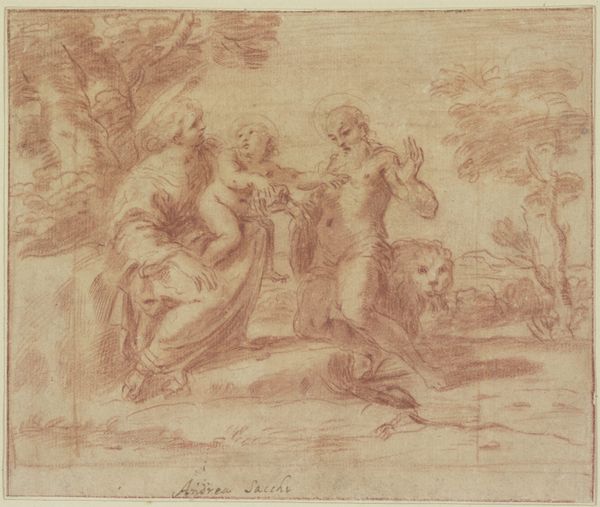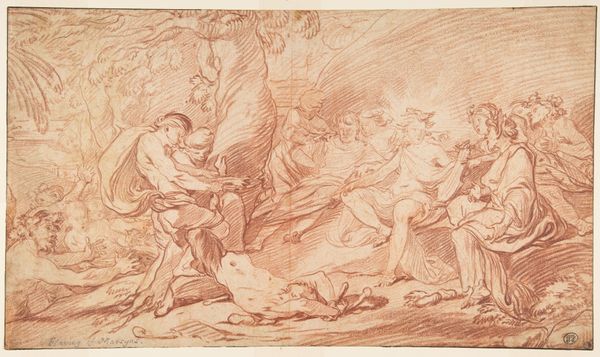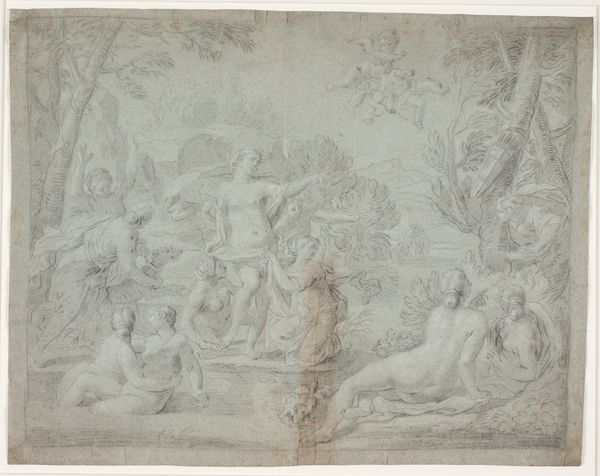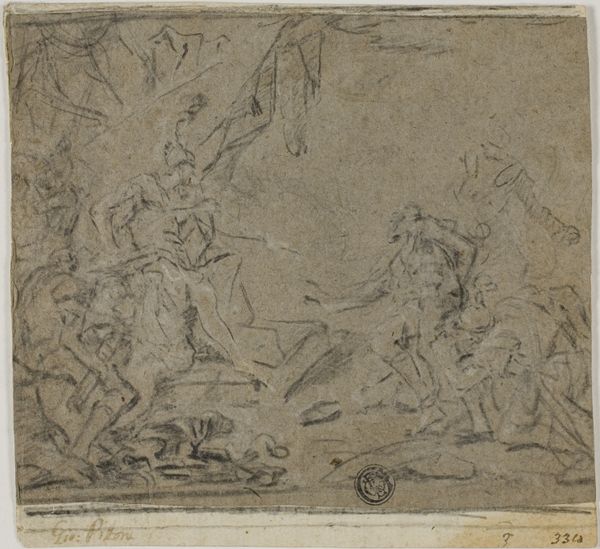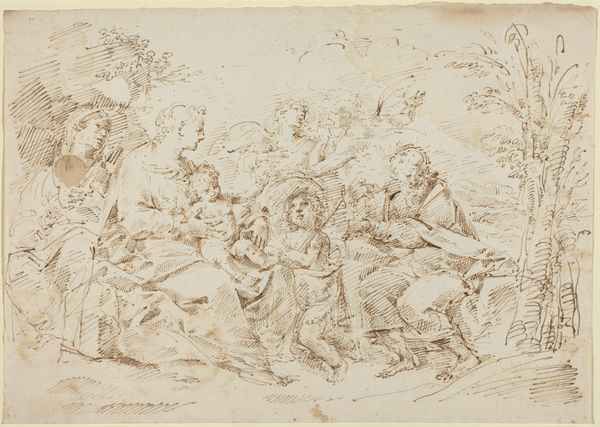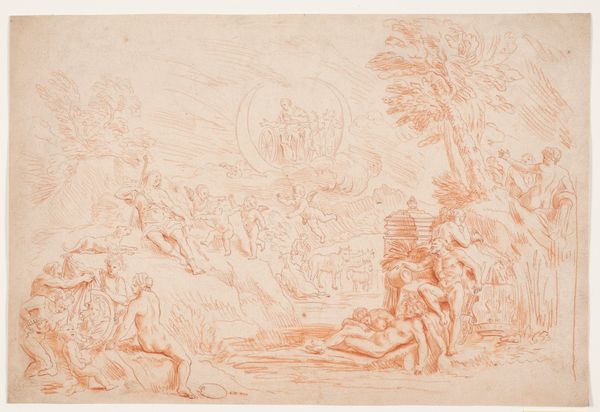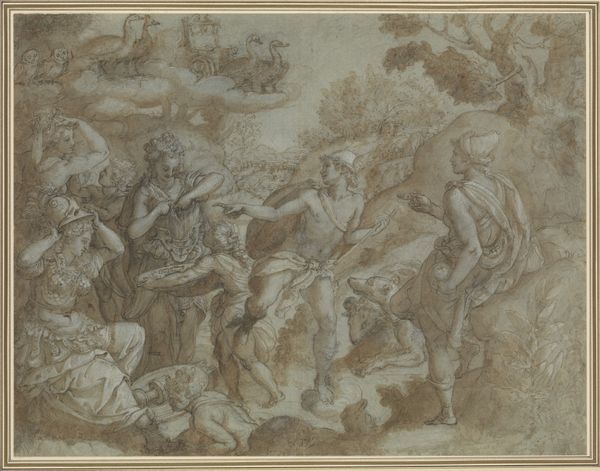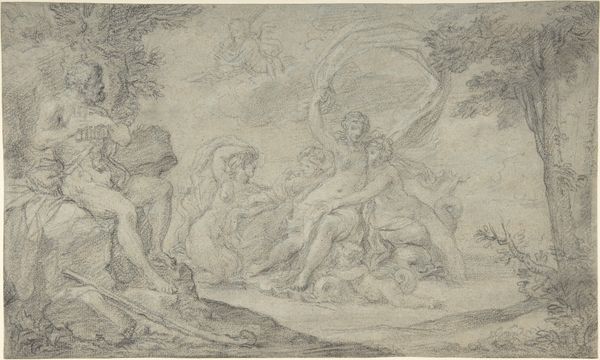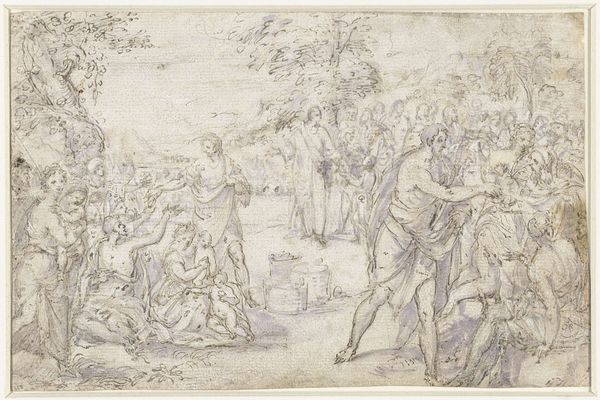
drawing, etching, paper, pencil
#
drawing
#
narrative-art
#
etching
#
etching
#
figuration
#
paper
#
pencil
#
rococo
Dimensions: height 245 mm, width 360 mm
Copyright: Rijks Museum: Open Domain
Curator: What an entrancing scene. The composition immediately gives off a feeling of serene contemplation, despite the flurry of characters present. Editor: Indeed. We are looking at François Boucher's "The Finding of Moses," made sometime between 1731 and 1770. It's currently housed here at the Rijksmuseum. Created with etching and pencil on paper, the medium itself seems appropriate for this period—it allows for a certain lightness of touch and delicacy in rendering form. Curator: Lightness of touch is a good way to put it! Look at the economy of line! There’s also an inherent intimacy afforded by these materials. Drawing, even a finished one like this, invites us to consider Boucher’s hand, his skill as a draughtsman, the pressures and qualities of the pencils and etching tools themselves. Editor: That intimacy is amplified when you consider the historical context. Think about the rise of salons during this time and Boucher's prominent role in shaping artistic taste among the Parisian elite. This wasn’t just about producing beautiful objects; it was about cultivating a culture of connoisseurship and defining what it meant to be "civilized" through art. These works were status symbols as much as they were aesthetic experiences. Curator: Agreed, and don't forget the workshops. These pieces involved multiple hands and levels of labor. What was Boucher’s input on each element and what aspects did his assistants contribute? Considering these questions leads to greater understanding. Editor: Absolutely, thinking of the audience of this drawing is key. Moses, as a figure, would certainly resonate differently based on the patron. His image—a powerful statement, perhaps on piety, family and destiny… I imagine that each household projected its desires onto the biblical subject matter! Curator: It also brings to mind how artists worked with their network of dealers to promote themselves and their artistic circles and schools. I agree about it likely appealing to patrons invested in reinforcing status as pious! Editor: Looking closely and contextualizing, one sees echoes not just of piety, but privilege, craft and the politics of visibility!
Comments
No comments
Be the first to comment and join the conversation on the ultimate creative platform.
